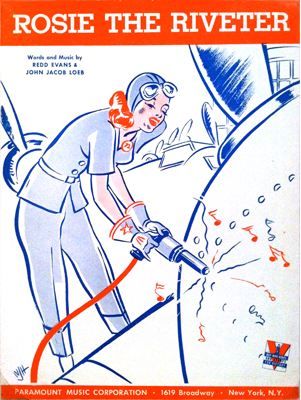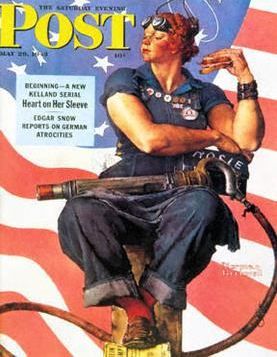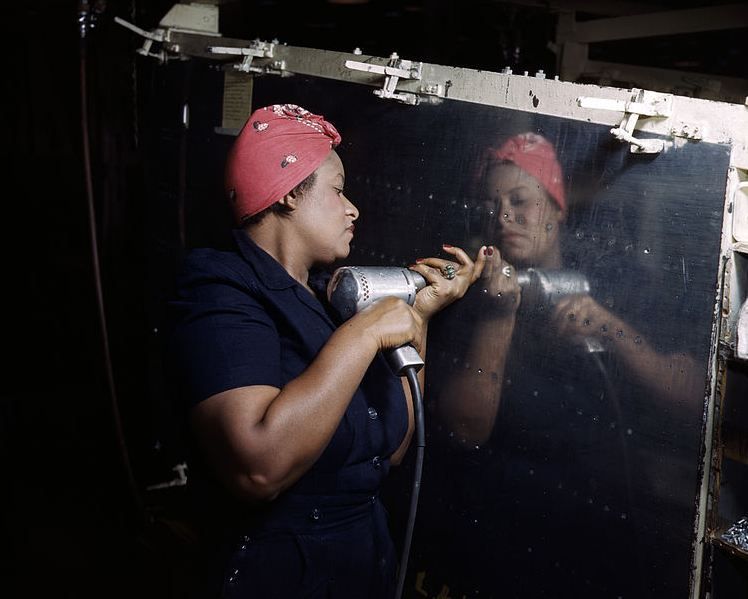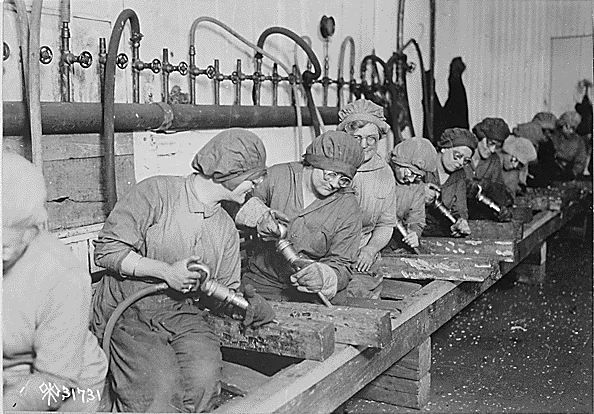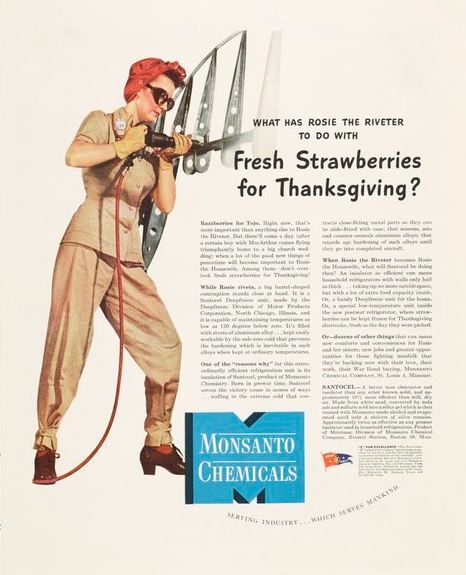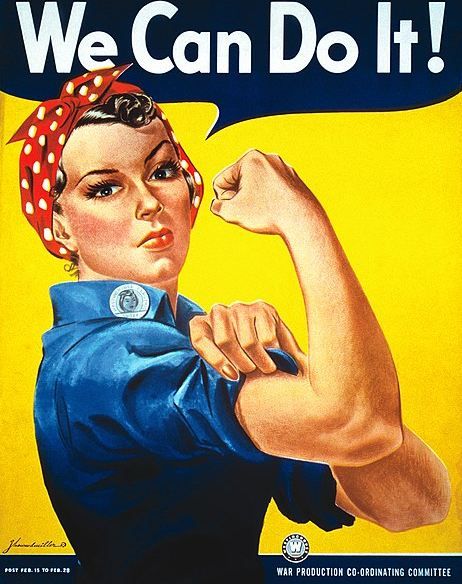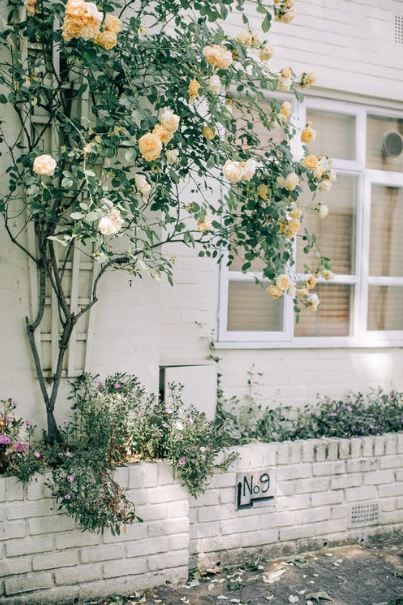‘Rosie the Riveter’ wasn’t an actual person, but was a cultural icon that represented the six million women who filled men’s jobs during World War II. In addition to this group, there were also around 10 million Rosie volunteers. Prior to this era in history, women weren’t usually doing jobs as factory workers, riveters, mechanics, etc. In the need of the hour, though, the Rosies of the country rose up and made a great contribution to the war efforts.
Today, the bravery and strength of such women are being recognized in many ways. In addition to magazine covers with ‘Rosie’ images and memorial articles in the media, there’s now also a memorial rose garden located at Fort Worth’s Vintage Flying Museum.
History of the Rose Contribution
Many people may have seen the wartime motivational poster of a woman in a strong, flexing position with the caption ‘We Can Do It!’ However, fewer people may realize that this was actually a depiction of a ‘Rosie’. All the women who gave their labor to the shipyards and factories while most of the men were away fighting were part of this group. Since World War II was a global war, governments required their whole populations to take part in fighting off their enemies. Males would fight as soldiers, while women would mostly back them up by taking up the jobs left behind.
Many of these jobs were hard, including the production of war supplies and munitions. There was also construction work, physical unloading labor, supervising roles in mills, the operation of heavy machinery, and building dirigibles. Women rose to the occasion quite successfully, though, making Rose the Riveter a symbol of women’s economic advantage, strength, tenacity, and feminism. This cultural icon isn’t limited to America, though; there were similar images of female war workers in Australia, Britain, and several other countries involved in the war.
The actual term ‘Rosie the Riveter’ is believed to have originated in a 1942 song penned by John Jacob Loeb and Redd Evans. At the time, there were also images of such women workers being spread in the media, much like government posters. Even commercial advertising was utilized by the wartime governments in order to motivate women to give their labor to factories. In 1944, ‘Rosie the Riveter’ was also the title and subject matter in a Hollywood movie.
There was also a propaganda campaign by the government that called for a ‘return to normalcy’, with one 1943 advertisement even emphasizing that women will go back to the home and become ‘Rosie the Housewife’. However, many women were now aware that they could come together to work along with raising children and running homes. Their efforts in supporting soldiers made women feel proud and accomplished as well. After the war, while several women did go back to what was considered ‘traditional’ work (as housewives, secretaries, etc.), many remained working in different fields.
The Efforts of the American Rosie the Riveter Association
The American Rosie the Riveter Association broke ground for this garden fairly recently. The Association collaborated with the museum as well as the Fort Worth Rose Society for this project.
Above 150 members of the community attended the ceremony, though the association was only expecting around 15 to 20 attendees. This goes to show how much people still remember and revere those individuals who did their best to support the economy and their country during the war.
At the groundbreaking ceremony, they also honored Wilda Stephens, a ‘Rosie’ who worked in a factory that built B-24 bombers. Her initial plan at the start of the war was to go back for her third year of college. Instead, she saw her friends and acquaintances going off to support the war as secretaries. Wanting to do her part, Stephens enrolled in the sheet metals school Consolidated Aircraft Corporation. She joined the factory upon graduating.
When honored at the rose garden ceremony, Stephens was delighted and ‘flabbergasted’ to see her life’s work recognized. She was also appreciative of the honor that proved her work was worthwhile.
About the Museum
The Vintage Flying Museum can be found in Fort Worth, Texas at the location of the Meacham International airport. It’s an aviation museum that runs on a non-profit model.
Since the museum has declared that its mission is to preserve the flying heritage of America in every way, it makes sense that they would also honor an important fixture like Rosie.
Future Plans
The Fort Worth’s ARRA president, Lesli Garvis, has expressed a hope on the behalf of the association to plant a garden in each congressional district all over the United States. He declared that such gardens will be physical places for honoring all the Rosies as well as educating people regarding the efforts of such women.
The panned Rosie gardens could range from a single rose bush to something more elaborate. No matter what the size and layout might be, these efforts are especially for honoring all the women who contributed to the war effort from the home front.
The Legacy of Rosie
Betsy Price, the mayor of Fort Worth, also spoke about the lasting legacy of Rosie the Riveters. She pointed out how many women today are now doing exactly what was once considered only men’s work. The Rosie contribution was a direct factor in making this happen, freeing women from the limited job offers they had before the war. Price herself stated that her ability to be mayor was thanks to the labors of the Rosies.
The Vintage Flying Museum’s director, Chuckie Hsopers, was also supportive of the rose garden being on museum property. She stated that the aircraft in the museum’s hangars were built by several Rosies, just like the B-24 bombers.
Description of the Memorial Garden
In order to be labeled as a memorial rose garden, the space would need a sign and a unique red and orange bud. The layout of the garden at Fort Worth is planned as a square, with rose centerpieces, bushes in each corner, and a picnic pavilion.
The museum also requires volunteer work for irrigating and planting the garden, as well as help with procuring supplies and laying concrete. Anyone interested can contact the relevant parties through the museum’s official website.
Contributing to the Rose Garden
Those interested can make their own contribution to the Fort Worth Rosie the Riveter garden. There are several ways to go about this; we can buy memorial bricks for building the pathways, sponsor a rose, make a monetary donation (getting some benefits like a membership or tickets to the museum’s annual dance), or contribute supplies like fencing, plants, trees, benches, etc.

